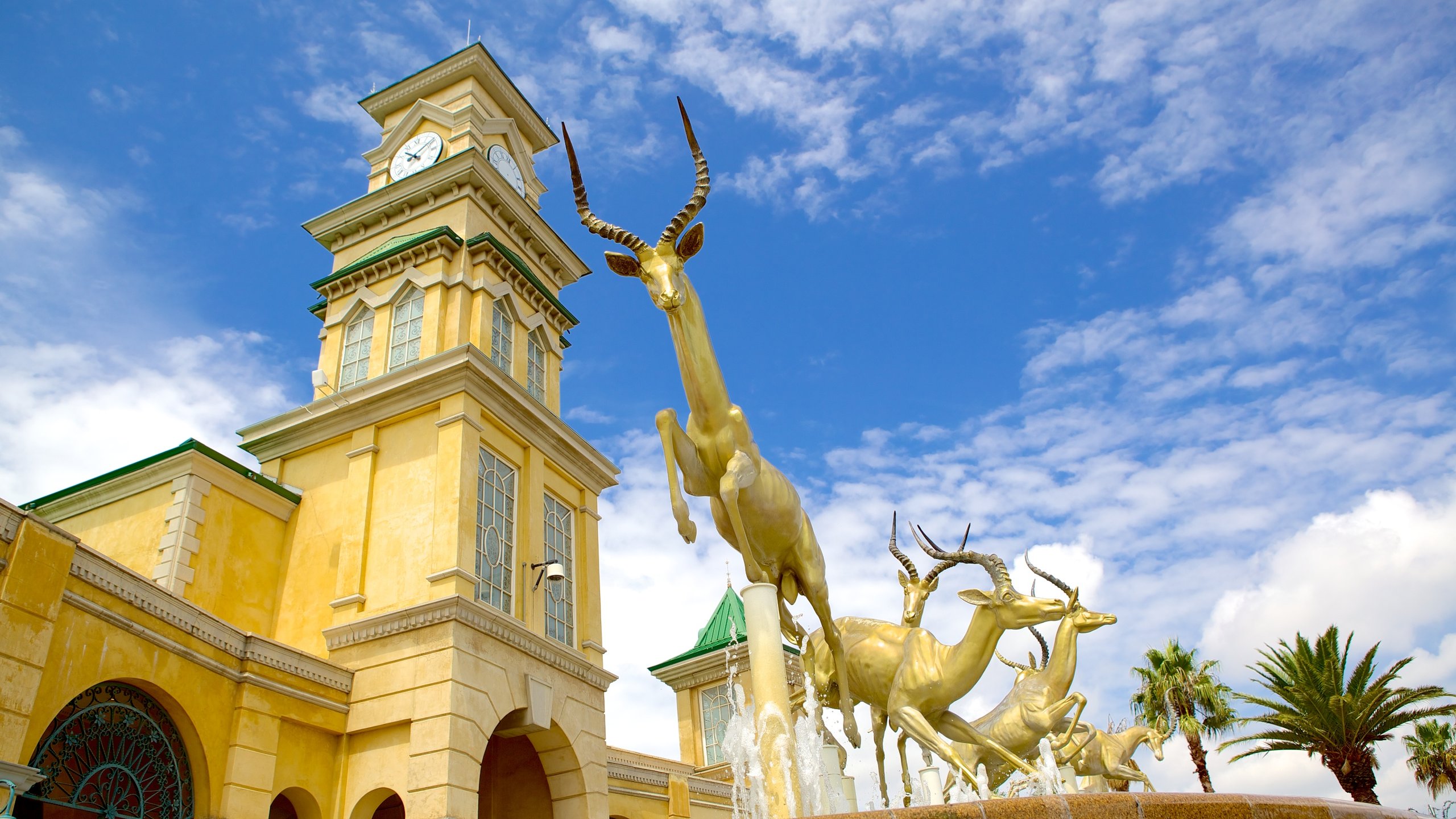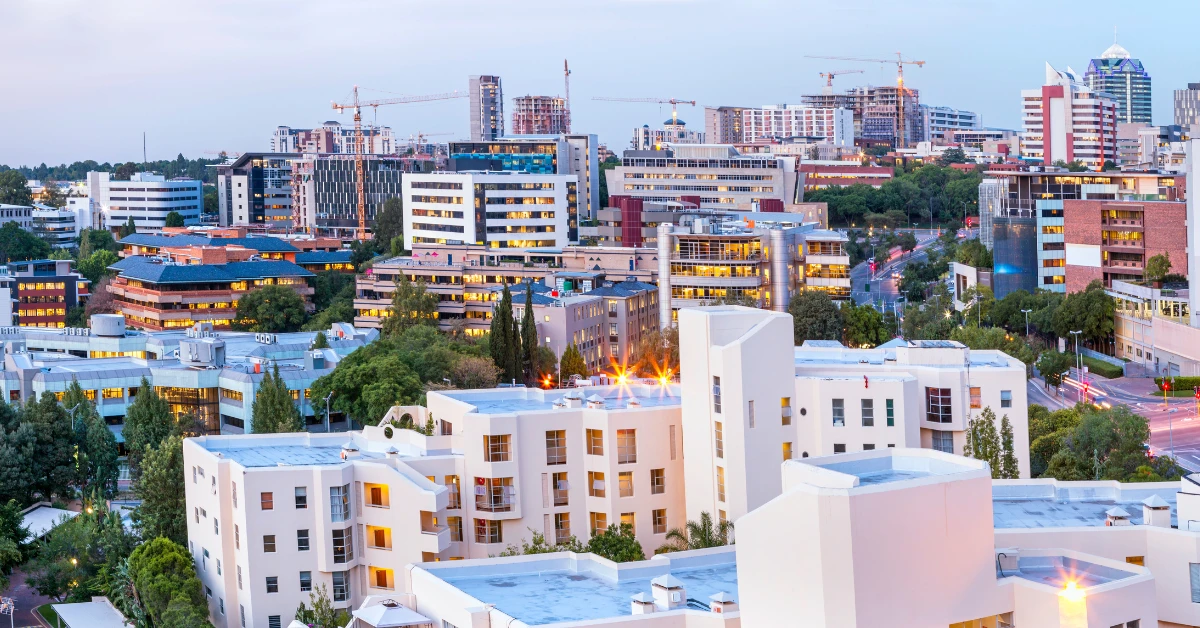Some Known Details About Johannesburg North Attractions
Some Known Details About Johannesburg North Attractions
Blog Article
Everything about Johannesburg North Attractions
Table of ContentsThe Greatest Guide To Johannesburg North AttractionsThe Single Strategy To Use For Johannesburg North Attractions9 Easy Facts About Johannesburg North Attractions ExplainedJohannesburg North Attractions - TruthsGet This Report on Johannesburg North AttractionsThe Definitive Guide for Johannesburg North Attractions
The city expanded on the side of the Witwatersrand Key Reef, a below ground stratum of gold-bearing quartz-silica empire that arcs for hundreds of miles beneath the Highveld - Johannesburg North attractions. Most of the gold mines in the city stopped operation in the 1970s, but in its day the Witwatersrand gold market accounted for even more than 40 percent of the globe's annual gold production.Johannesburg has a pleasant climate. Summer season temperatures average regarding 75 F (24 C); winter months temperature levels average concerning 55 F (13 C) and just sometimes dip below freezing. The city enjoys about 8 hours of sunlight per day in both winter months and summer season. Rain standards regarding 28 inches (700 millimetres) per annum, yet the overall differs considerably from year to year.
What rainfall the city gets drops virtually specifically in the summer months, frequently in amazing late-afternoon electric tornados., where lots of locals still depend on coal for fuel.

The Facts About Johannesburg North Attractions Revealed
The equilibrium of the city is occupied by whites. Accommodation differs in character and high quality. Soweto is well-known for its endless rows of municipally built, two-room matchbox homes, yet it also has a few prosperous territories as well as bristling squatter camps, where 10s of thousands live without water, electrical energy, or cleanliness facilities.
Physical growth, although somewhat restricted by transport, proceeded quickly as immigration to South Africa, and Johannesburg in certain, increased significantly.
Most poor suburbs were combined, with inadequate blacks and whites living together, although the wealthy suburbs were usually booked for whites.
The previous system of eleven numbered areas was reorganised in 2006. Marshalltown, as seen from the top of the Carlton Centre. The M1 and M2 run behind the buildings, and the southern residential areas expand past the freeway limit. The central city of Johannesburg is situated within the city's Area F. The approximated populace of the region is 200,000, [] The number of individuals living in the internal city on a casual basis is unknown, as lots of are unlawful immigrants. The majority of higher-income homeowners and white individuals have relocated to the north suburban areas and have actually been replaced by lower-income black individuals. The unemployment, education, and age accounts of the area are all unidentified, because of the difficulty of acquiring trustworthy information about the location.
Rumored Buzz on Johannesburg North Attractions
Centred on the CBD, the region consists of the suburbs of Yeoville, Bellevue, Troyeville, Jeppestown, and Berea to the eastern. To the west it infects Pageview (Johannesburg North attractions) and Fordsburg. There are small industrial parks to the south, such as City West-Denver and Benrose. Around 800,000 commuters go through the inner city on a daily basis, and it functions as a regional purchasing node for site visitors from the southerly suburban areas. Yeoville and Bellevue have a mix of home buildings and solitary domestic systems on small great deals. The region is situated on a hilly divide that runs from east to west. The most conspicuous geographic feature is Observatory Ridge, which is named for the large observatory situated on it. The recreational areas are no more utilized, due to safety issues.

Johannesburg Arena, a training school for both the Golden Lions and Orlando Pirates, is surrounding. The eastern suburban areas of Johannesburg are located in the city's 7th [] and 9th [] regions. The location is likewise functionally incorporated with East Rand border communities outside of the official border of Johannesburg, such as Bedfordview and Edenvale (both part of Ekurhuleni Metropolitan District).
6 Simple Techniques For Johannesburg North Attractions
The eastern suburban areas are some of the earliest locations of Johannesburg, there are large communities of Jewish and other European histories, the majority of the populace is English talking. There are 3 golf training courses as well as a number of secured ridges with read this viewsites.
The area is read more mainly made up of old "matchbox" residences, or four-room houses constructed by the federal government, that were constructed to supply inexpensive lodging for black workers during discrimination. Soweto is an acronym, representing "South Western Townships". Road after road in this location is lined with matchboxes; nevertheless, there are a few smaller areas where prosperous Sowetans have constructed residences that are much more similar in stature with those in even more affluent suburbs.
Hostels are another noticeable physical function of Soweto. Initially developed to house male migrant employees, numerous have actually been enhanced as houses for couples and households. The N1 Western Bypass skirts the eastern boundary of Soweto. The suburb was not historically permitted to develop employment centres within the area, so practically all of its homeowners are commuters to other parts of the city.
Johannesburg North Attractions for Dummies
The property locations in the north suburbs are primarily formal, with no significant locations of casual housing, or real estate that company website does not have an irreversible framework. This is an established area, there is a pattern of land use change from domestic to business, specifically along major arterial roads and around well established nodes.
The area is well connected to road networks, particularly along the north-south axis formed by the M1 and N1. Roads to the east and west are much less well created, as there are no highways travelling because direction. Towards the north border of the city, the thickness of development decreases, leaving big locations of untaught land around Midrand.
Things about Johannesburg North Attractions
The very first suburban area to the north of the central city is Parktown, which lies on a hill ignoring the inner city and Hillbrow. It has several well-off residents and Edwardian-design mansions, along with the Education and Clinical campuses of the College of the Witwatersrand. The large concrete Charlotte Maxeke Johannesburg Academic Medical Facility controls the skyline of Parktown.
Report this page